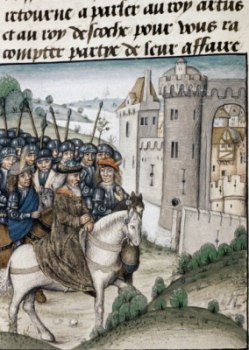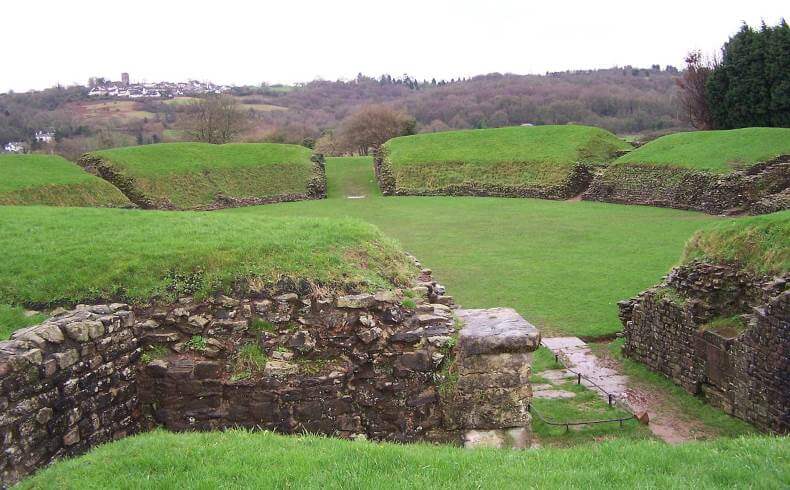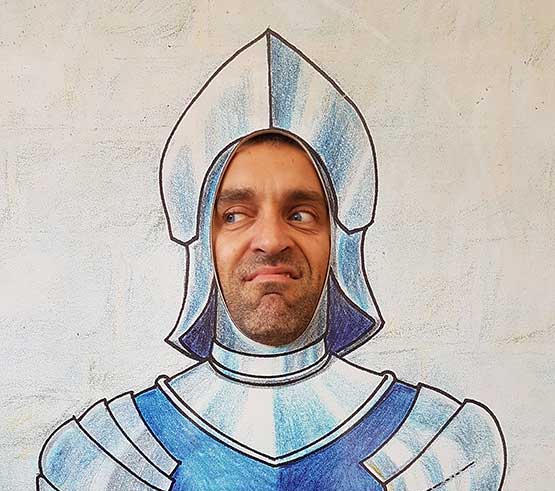Camelot, Court of King Arthur
by Ben Johnson
Although most scholars regard it as being entirely fictional, there are many locations that have been linked with King Arthur’s Camelot. Camelot was the name of the place where King Arthur held court and was the location of the famous Round Table.
Perhaps a clue to its possible location might be found in the sources we have for the legend of King Arthur. Did he exist and if so, who was he? Was he perhaps a Romano-Celtic leader defending his lands from Anglo-Saxon invaders?
The earliest reference to Arthur is in a poem dating from around AD 594. Aneirin’s Y Gododdin is the earliest surviving Welsh poem and consists of a series of separate elegies to the men of the Gododdin who died at the Battle of Catraeth (believed to be modern day Catterick in Yorkshire), fighting against the Angles of Deira and Bernicia. Nearly all the Britons were killed and their lands absorbed into the Anglo-Saxon kingdoms. In one of these elegies a reference is made to Arthur, which suggests he was already a famous figure at the time of the poem’s original composition.

Camelot, from a 14th century manuscript
This is the earliest reference to Arthur. He appears again in the ‘History of the Britons’, written in AD 830 by Nennius, where he is depicted as a heroic general and a Christian warrior. Later references date from the early 12th century, and include Geoffrey of Monmouth’s chronicle Historia Regum Britanniae (“History of the Kings of Britain”), and later, the works of Chrétien de Troyes and Thomas Malory.
Caerleon, South Wales
Both Geoffrey of Monmouth and Chrétien de Troyes place Camelot, Arthur’s chief court and fortress, in Caerleon, South Wales, one of three Roman legionary forts in Britain. Although the name ‘Caerleon’ sounds typically Celtic, it is actually a corruption of the Latin words castrum (fortress) and legio (legion).

The Welsh are the direct descendants of the Romano-Britons of England and Wales, who were pushed back towards the west of Britain by the Anglo-Saxons in the 5th and 6th centuries. Arthur is considered by many to have been a Romano-British leader fighting the Anglo-Saxon invaders. So the placing of Camelot in Wales at Caerleon could be quite plausible.
The legend of Arthur and his knights also appears in The Mabinogion, a collection of eleven stories collated from early medieval Welsh manuscripts, intertwining pre-Christian Celtic mythology, folklore, tradition and history.
The Mabinogion tales were written down in the 14th century but it is widely acknowledged that the stories they are based on date from much earlier than this. The four ‘mabinogi’ tales are thought to be the earliest, dating from the 11th century. Five of the remaining stories involve the legend of Arthur and his knights, even including one of the earliest references to the Grail legend. Three of the Arthurian tales are set at ‘Arthur’s Court’.
If we look at Aneirin’s poem with its reference to Arthur written around AD 594, and then look at the Mabinogion stories, it appears that the tale of King Arthur is rooted in Welsh folklore, having been passed down through the ages in the oral tradition. If so, this may suggest that Arthur may indeed have been a real person and that some, if not all, of the deeds and accounts of him may be based in fact. Or it may be that ‘Arthur’ is a composite character incorporating the deeds of several British warriors and leaders of the 5th and 6th century.




